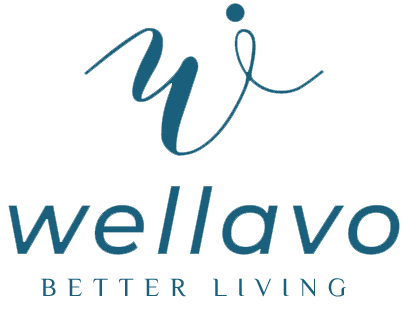Few things feel better than stretching your body first thing in the morning. You may even stretch involuntarily at times. It’s as if your body knows that it needs a good stretch to work more comfortably and efficiently.
Stretching lengthens your muscles and reduces stiffness. Stretching also has the potential to stimulate the release of pain-reducing endorphins and improve your circulation.
Adding even a few minutes of stretching to your daily routine can help you reap the potential benefits.
In this article, we’ll examine some of the reasons you may feel the need to stretch in the morning, throughout the day, and before bed. And, if you want examples of some simple stretches to help you get started, we have that covered, too.
Not only does stretching feel good, it also plays an important role in keeping your body healthy. Some of the potential benefits of regular stretching include:
- Improved flexibility. Stretching can help lengthen your muscles and improve your range of motion.
- Better circulation. Regular stretching may have both short-term and long-term benefits on your circulatory health.
- Reduced injury risk. Improving your range of motion can potentially decrease your risk of muscular injury.
- Less back pain. Stretching your muscles can help ease and prevent back pain by strengthening your back muscles.
- Improved athletic performance. Improved joint movement and flexibility may help boost your athletic ability.
- Less stress. Many people find stretching relaxing. Stretching activates your parasympathetic nervous system, which can help induce calmness.
- Better posture. Tight muscles can pull your body into poor posture. Combining a stretching program with core strengthening may help improve your alignment.
In cartoons, it seems like characters are often depicted yawning and stretching their arms over their head when they wake up.
The animators may be on to something. Subconscious stretching is known as pandiculation, and it’s a behavior seen in most mammals.
It’s thought that yawning and stretching when you wake up could be your body’s way of modifying tension in your fascia.
Fascia is connective tissue that surrounds the muscles, organs, and blood vessels throughout your body. Stretching is one way to keep your fascia supple, flexible, and oxygenated.
Fascia that’s free of tension and tightness may make it easier to move, exercise, or go about your daily activities.
Examples of morning stretches
Here are examples of two morning stretches that can help loosen and warm up your muscles at the start of your day.
Cat-cow
The cat-cow stretch helps release tension in the muscles along your spine, shoulders, and abdominals.
How to do this stretch:
- Start on your hands and knees with your hands directly under your shoulders, your palms flat on the floor with your fingers pointing away from you. Keep your knees under your hips.
- Take a deep breath and drop your belly toward the floor while arching your back downward and tilting your head slightly upward.
- Exhale and push through your palms while rounding your back and pushing your spine toward the ceiling.
- Repeat each position for 5 to 10 breaths.
Neck circles
Your neck may feel tender or painful in the morning if you sleep on a pillow that’s either too high or too low. Neck circles may be especially helpful for alleviating tension and stiffness in your neck when you wake up.
How to do this stretch:
- Stand or sit with good posture and look straight ahead.
- Roll your head forward and to the left until you feel a gentle stretch on the right side of your neck.
- Pause for a moment and roll your head forward and to the right.
- Repeat the motion 5 to 10 times on each side.
Your muscles can get stiff and tight after being in one position for an extended period of time.
Many of us spend hours a day sitting, which can cause stiffness and discomfort in the muscles in your neck, back, hips, and legs.
Breaking up long periods of sitting with a a few minutes of movement or stretching can help ease tension and discomfort in your muscles.
Stretching can also be a great way to ease muscle tightness or fatigue after exercising.
Examples of afternoon stretches
Here are examples of two stretches you can do throughout the day to reduce muscle stiffness.
Pigeon pose
Pigeon pose can be especially helpful for releasing tension in the muscles around your hips and glutes.
How to do this stretch:
- Start on your hands and knees.
- Bend your right knee and bring your right shin to the floor in front of you.
- Lengthen your left leg behind you so that the top of your foot is flat against the floor.
- You can put a pillow or yoga block under your hips if you can’t comfortably get your hips to the floor.
- Straighten your back and rest your hands next to you on the floor.
- Hold this position for up to 10 breaths and then switch legs.
Downward-facing dog
The downward-facing dog yoga stretch is a great way to strengthen and stretch the muscles in your back, shoulders, hamstrings, and calves.
How to do this stretch:
- Start on your hands and knees on the floor.
- Push up through your hands as you lift your knees off the floor.
- Keep your back, legs, and arms straight as you lift your tailbone toward the ceiling.
- Press firmly into your hands and keep your weight evenly distributed between both sides of your body.
- Keep your head down, in line with your arms, and your heels slightly off the floor.
- Hold this pose for up to 1 minute, then return to the starting position.
Stretching before bed can be especially relaxing, and research agrees.
In a review of studies published in Sleep Medicine Reviews, researchers found that the majority of studies that examined the relationship between sleep quality and meditative movement — which includes stretching poses — found positive results.
Stretching may help promote calmness by activating your parasympathetic nervous system. This branch of your nervous system is responsible for your “rest and digest” activities
Examples of bedtime stretches
Here are examples of two gentle stretches you can do before going to bed.
Child’s pose
Child’s pose is a simple stretch that can help relax your body and reduce stress. This stretch is also a good way to ease tension in your shoulders, back, and neck muscles.
How to do this stretch:
- Start on a yoga mat or other soft surface and sit back on your heels.
- Hinge back with your hips as you fold forward and bring your forehead to the floor.
- Stretch your hands over your head with your palms flat on the floor.
- Hold the pose for 3 to 5 minutes while breathing deeply.
Kneeling lat stretch
The kneeling lat stretch is especially helpful for reducing tension in your latissimus dorsi muscles, also known as your lats. These large V-shaped muscles connect your arms to your vertebral column.
How to do this stretch:
- Kneel in front of a chair or other low surface. Put your palms against the surface of the chair with your arms straight over your head.
- Hinge back with your hips until you feel a stretch beneath your arms.
- Hold this pose for up to a minute while breathing deeply.
There are many reasons why you stretch, sometimes involuntarily. Stretching not only feels good but it also plays an important role in keeping your body healthy.
Stretching can boost your flexibility and range of motion. It can also improve your circulation, and reduce pain, stress, and tension in your muscles.
Stretching can be especially beneficial after sleeping, exercising, or sitting in the same position for several hours. It can also help you relax and unwind before going to bed.





